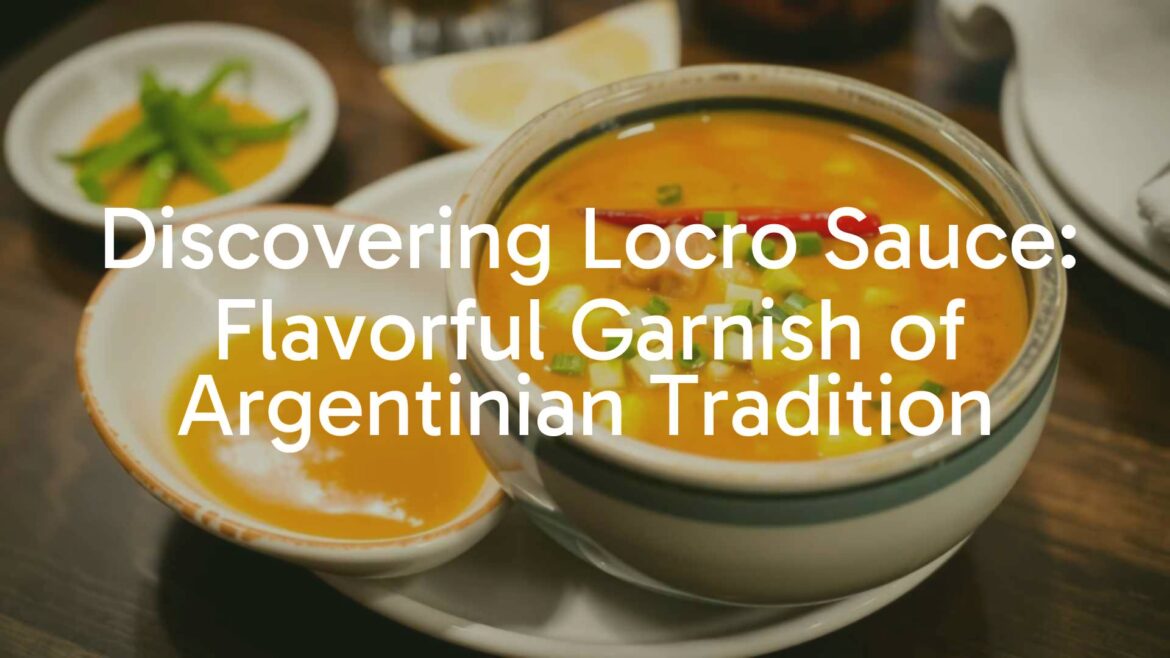Locro Sauce: An Essential Companion to a National Dish
In the heart of Argentinian cuisine, locro sauce—often known simply as salsa para locro—stands as the vibrant finishing touch to the beloved stew, locro. More than just a condiment, locro sauce is a treasured element that brings a zesty kick and aromatic richness to one of Argentina’s most iconic comfort foods. Far from being a generic side, this sauce has a special place in culinary traditions, representing the Argentine flair for transforming humble ingredients into something truly memorable.
What Makes Locro Sauce Unique?
Locro sauce is distinctly characterized by its bold combination of chili, paprika, green onions, garlic, and rich, warm oil. It is designed to complement and elevate locro—a hearty stew of corn, squash, beans, and various meats—by providing brightness, color, and heat. The golden hue of smoked paprika or crushed red pepper mixed with green aromatics gives each spoonful layers of flavor and a beautiful presentation.
Historical Roots and Cultural Significance
The origin of locro sauce is closely tied to the history of locro itself, which arrived in Argentina via indigenous Andean cuisine and evolved alongside colonial influences. As locro became a symbol of patriotic celebration, particularly on national holidays like May Revolution Day (May 25), the accompanying sauce gained its own celebratory status. Families take pride in preparing their unique version of locro sauce, sometimes fiercely guarding their ingredient ratios or preferred level of spiciness.
Social Gatherings and Festive Occasions
Serving locro without its signature sauce would be unthinkable at communal gatherings. During patriotic festivities or family reunions, someone is always put in charge of preparing the salsa. Whether ladled individually or served for the table, the sauce is a point of conversation and shared enjoyment—folks often discuss whether the batch should be hotter or more garlicky. It represents the convivial, generous spirit of Argentine dining, where food is about more than sustenance; it’s about sharing flavor and tradition.
Regional Variations
While the backbone of locro sauce—oil, paprika or chili, and green onions—remains consistent, regional identities shine through in the details. In the northwest, ají (local hot pepper) is favored for extra heat, while some Cordoban versions add vinegar for acidity. Elsewhere, a hint of cumin or oregano may appear, and the cooking fat for the sauce can be anything from vegetable oil to rendered pork fat, reflecting regional tastes and resources. Each cook brings their own touch, making locro sauce as diverse as the people who prepare it.
Curiosities and Common Questions
Many wonder if locro sauce can be used for other dishes. While specifically crafted for locro, adventurous eaters drizzle it over roasted meats or as a bold dip for bread. Another curiosity is whether it must always be spicy—though heat is traditional, the spiciness is often adjusted to suit the guests, with some versions being quite mild and focused more on smoky paprika flavor.
Conclusion: Small Details, Big Flavor
Locro sauce proves that even a simple condiment, skillfully composed, can deepen the experience of Argentina’s national cuisine. Whether fiery or mild, it is always served with the intent of enhancing togetherness and savoring tradition—reminding everyone that in Argentinian food culture, flavor and festivity go hand in hand.


